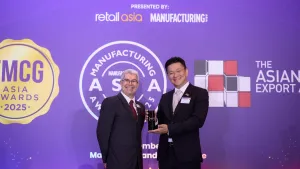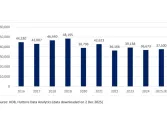
Indian manufacturing surges to 5-year high on domestic demand
GST reform and robust home market fuel fastest output growth since 2020.
India's manufacturing sector accelerated sharply in October, with output expanding at its fastest pace in five years as GST tax relief and buoyant domestic demand propelled growth across the world's fifth-largest economy.
The HSBC India Manufacturing Purchasing Managers' Index rose to 59.2 in October from 57.7 in September, marking a quickening improvement in the health of the sector.
The reading signalled robust expansion well above the crucial 50.0 threshold that separates growth from contraction.
Output growth matched the rate seen in August and represented the joint-best performance in five years, driven by a sharp acceleration in new orders. Companies attributed the surge to advertising efforts, buoyant demand conditions and the recent Goods and Services Tax reform.
The pick-up in sales growth stemmed mainly from the home market, with manufacturers reporting that GST relief had boosted demand. New orders increased at a sharp and strengthening pace during the month.
However, new export orders told a different story. Whilst international sales still rose markedly, the pace of expansion was the slowest in 10 months and the least pronounced in the calendar year to date, suggesting global demand may be softening.
Pranjul Bhandari, chief India economist at HSBC, said: "India's manufacturing PMI accelerated to 59.2 in October, up from 57.7 during the month prior. Robust end-demand fuelled expansions in output, new orders, and job creation."
Manufacturers continued to purchase additional raw materials and semi-finished items in October, reportedly to supplement production and add to their inventories. Notably, buying levels expanded at the fastest pace since May 2023.
Holdings of raw materials and semi-finished items increased at the second-fastest rate since data collection began in March 2005, behind only May 2023. Survey members indicated that demand buoyancy encouraged them to lift stocks, whilst suppliers were generally able to dispatch inputs in a timely manner.
Average delivery times shortened to a moderate extent in October, the most pronounced improvement in four months, as suppliers managed to keep pace with the surge in demand.
One factor that supported purchasing growth was a notable softening of cost inflation. The latest rise in overall expenses was modest, the weakest in eight months and well below the long-run series average.
Despite receding cost pressures, the rate of charge inflation matched that registered in September and was therefore the joint-highest in 12 years. Survey participants indicated that demand strength was the key factor behind the current hike in output prices.
Ms Bhandari noted that "input prices moderated in October whilst average selling prices increased as some manufacturers passed on additional cost burdens to end-consumers."
Some firms suggested that greater outlays on freight and labour were transferred through to customers, allowing manufacturers to protect margins despite the robust pricing environment.
## Employment growth continues
Job creation entered its 20th consecutive month in October, with the rate of expansion moderate and broadly similar to September. The sustained hiring trend underscored manufacturers' confidence in the durability of the current upturn.
Capacity pressures among Indian manufacturers remained mild, as signalled by another slight rise in outstanding business volumes. Demand strength was the main determinant of rising backlogs, according to monitored companies.
Finished goods inventories likewise rose, but the pace of accumulation was only marginal as firms often fulfilled sales from warehoused products.
Regarding the outlook, manufacturers attributed positive expectations to GST reform, expanded capacities and marketing efforts. They also predicted demand resilience and expressed hope that pending contracts will be approved.
Ms Bhandari said: "Looking ahead, future business sentiment is strong due to positive expectations around GST reform and healthy demand."
The combination of robust domestic growth, sustained employment gains and strong business confidence suggests India's manufacturing sector is well positioned for continued expansion, even as it navigates the challenge of elevated selling prices and a slowdown in international demand.















